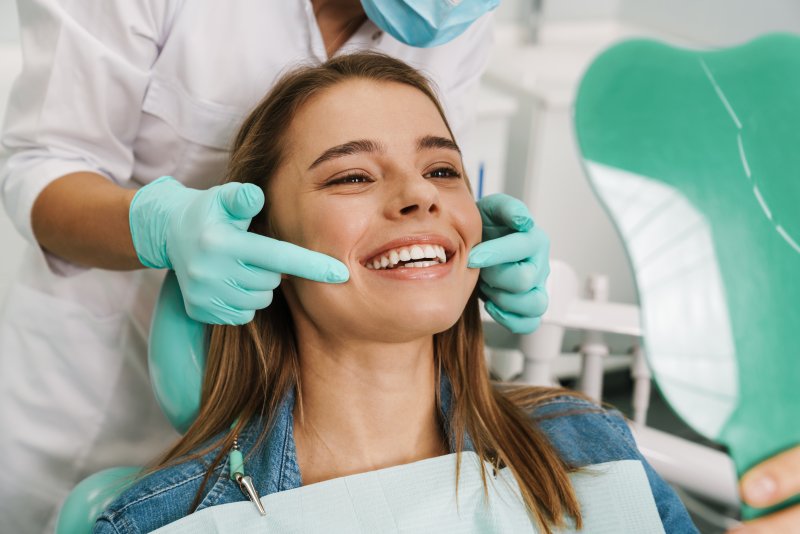
In a culture that places so much emphasis on appearance, there can be a great deal of pressure to focus on your mouth’s aesthetics. This is often to the detriment of the function of your body, including your teeth. Whitening treatments are a great way to remove stains and restore a brilliant smile, but they can’t fix any of your other dental issues.
Continue reading to learn why the color of your teeth doesn’t always match the level of your oral health.
What Color Are Teeth Supposed to Be?
Teeth come in many shades and variations of color. The staining on your teeth is almost like a fingerprint as no two people are exactly the same.
Teeth are made up of layers. The outer layer of a tooth is called enamel, and it varies in thickness and translucency. The layer underneath is called dentin, and it has a yellow color to it. Natural teeth can be somewhat yellow because the dentin can show through the enamel to a degree.
Why Are White Teeth Not an Indicator of Oral Health?
Even if your teeth are bright white, you could still have some underlying oral health issues that haven’t been addressed such as cavities and gum disease.
Cavities can sometimes hide in crevices where they’re hard to see, so this is why it’s best to go to your dentist to do the treatment instead of buying a kit over the counter. In fact, your dentist won’t proceed with whitening treatments unless they know you don’t have any cavities.
Teeth whitening kits use a chemical called hydrogen peroxide to achieve their stain-busting effect. The chemical gets into the pores of your teeth and can make them sensitive for a few hours after the treatment. If you have any cavities, this effect can also trigger toothache pain.
Gum disease is another condition you can carry, even with a bright set of pearly whites. As bacteria settle into the spaces between your teeth and gums, they can multiply and cause a severe infection. This turns your gums red and puffy and can even lead to tooth loss.
Why Do Teeth Change Color?
Teeth naturally change color over time for many reasons. While some can affect your oral health, others are superficial:
- Tannins and Food Coloring – If you indulge in a lot of coffee, tea, red wine, or drinks dyed with food coloring, those beverages can stain your teeth. Tannins in particular are notorious for their bitter taste and dark coloration.
- Sickness or Infection – The color of your teeth can tell you something about your oral health if you know where to look. Teeth can turn orange or green when a fungal infection is present. They can also have flecks of black or brown due to cavities.
- Age – As you age, your enamel naturally wears down, making your teeth look more yellow.
There’s nothing wrong with wanting to look your best and display a confident white smile. However, you should ensure that you’re not neglecting your oral health as you chase your desire. If you’re considering a whitening treatment, it’s best to go to your dentist first. Having white teeth as well as a clean bill of oral health is the ultimate confidence booster.
About the Practice
Dr. Yelena Obholz and Dr. Kaur work together at Aesthetic & Family Dentistry of North Bethesda to provide quality dental care with a personal touch. Their combined expertise ensures that all your needs will be met with the latest dental technology and superior techniques. To schedule an appointment, call (301) 658-7647 or visit the website to learn more.
